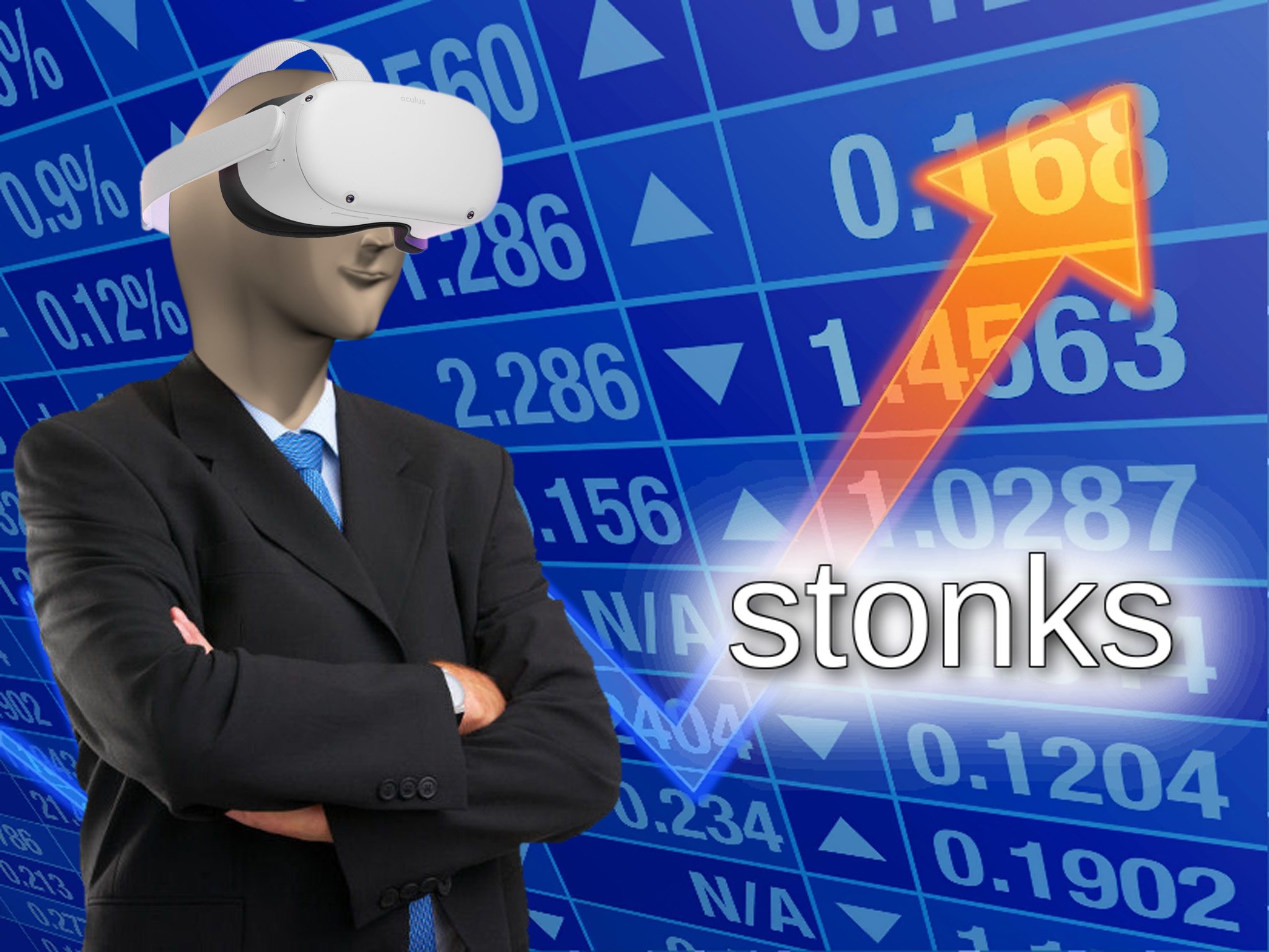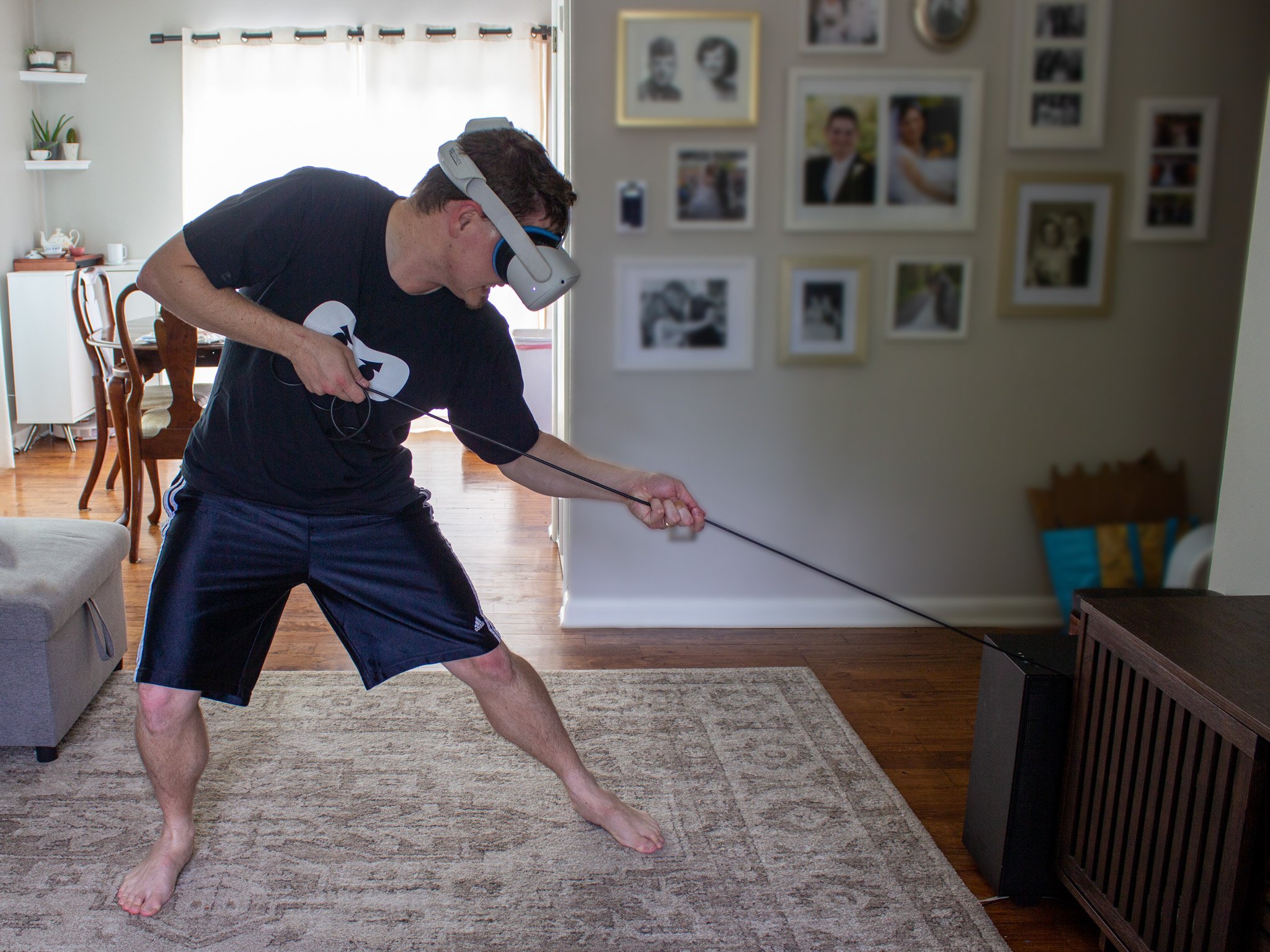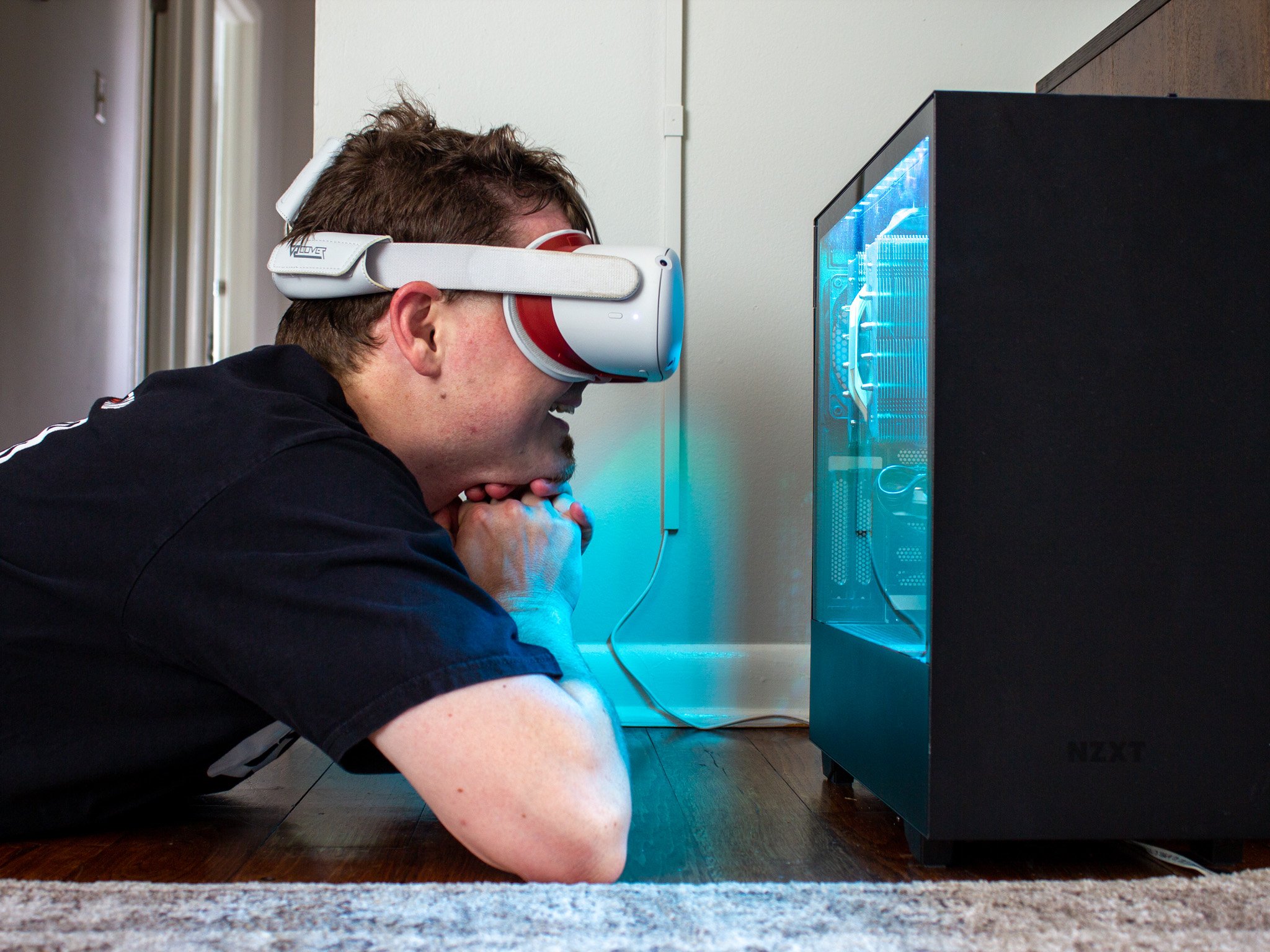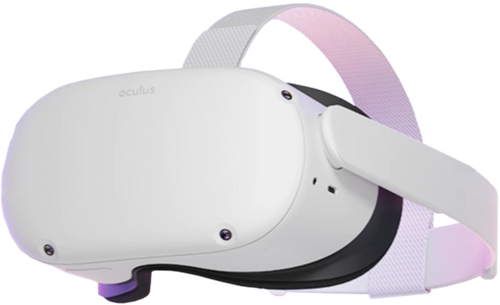It's not a zero-sum game, despite the outward appearance.
For years now, the VR industry has been laser-focused on delivering the highest-fidelity experience they can get. Whether it's cutting edge graphics, extremely high refresh rates, controllers that can sense individual finger movements, or sub-millimeter accurate room-scale tracking, PC VR has been the defacto destination for developers looking to make a name for themselves in an exciting new medium.
That is until the Oculus Quest came around. As yet another VR headset powered by a mobile chipset, few expected much of the Quest when released in the Spring of 2019. Sure, it finally supported 6 degrees-of-freedom tracking — that's the term used to denote the ability to walk around and move in a VR game as you would expect to move in real life — but the processor and other components inside were abysmally low powered when compared to a proper gaming PC.
Not long after the Quest was released, it was nearly impossible to find it on store shelves. The trend continued for months and months, and the headset was nearly impossible to find during the all-important Christmas holiday season of 2019. Then the sales numbers started surfacing, and we quickly understood why. The writing was on the wall for PC VR, and that was long before the Oculus Quest 2 even launched.
There's no arguing with the numbers: the Quest 2, in particular, has sold more units than any dedicated PC VR headset could have ever wished for. It's a reality that began the recent PC VR is dead discussion on social media and also a bit deeper discussion than surface sales figures or available games. It's a surprise few — if anyone — saw coming, but it's a reality that means a healthier VR industry for all players involved.
Keeping the Change
When we look back at the landscape when PC VR reigned supreme, we find that it was pretty barren. Developers popped up like weeds to try out this new medium and see where it led them. The result, in many cases, was an income drought that starved many indie studios and turned larger studios away from further investment. As a result, PC VR was (and still is) much like a desert, beautiful and wonderful in its own special way but, ultimately, devoid of the means of sustaining substantial life.
Some developers say 95% of their income comes from the Quest, while the remaining 5% stems from PC VR versions of the same game.
Meanwhile, the growth of the Quest family has finally provided developers with a means to actually make money off their games for the first time since the beginning of consumer VR. Take Top Golf developer Ryan Engle, for instance, who stated "we keep asking other devs and most are quoting less than 5% of sales from PCVR vs. Quest."
Five percent. Five. Let's take those numbers and extrapolate them out to a real-world example. If a developer makes $100,000 off the Quest release of their game, that means they would make a paltry $5,000 off the PC VR release. That's the difference between a healthy year's salary for a small developer and a single month's wages. That could mean choosing between doing well for an entire year and worrying about buying groceries the next month, depending on the platform that's developed for.
One developer made more money in two months with a single game than he made with 2 games on PC VR in 4 years.
Another developer stated that he "made more money in 2 months with one game than did w (sic) 2 games on pcvr in 4 years". That game is Home Plate Baseball, and it isn't even in the full Oculus store on Quest. It's only in the experimental App Lab section, where you either have to follow a link to find it or search for the exact name on the Oculus Store, only to be greeted by several "warnings" of the title being experimental before you can buy and download it.
Paul Brady, co-founder and CCO of Resolution Games — that's the developer of excellent VR titles like Demeo, Angry Birds VR, and dozens more — put it this way.
Standalone VR has started a new era for VR, one where it's becoming more widely adopted by more people. While standalone may be the catalyst for taking VR mainstream, PCVR continues to see enough action to still be a consideration for developers.
Paul Brady, co-founder and CCO of Resolution Games
The market has made the shift, and it's for the good of everyone. Gamers can jump in more quickly and with no hassle compared to PC VR, and developers can actually make money on their titles now. Better sales and higher margins mean more money in developers' pockets, leading to more investment in the medium.
While big-name titles like the upcoming Splinter Cell VR probably needed significant investment from Facebook to get started, future big-name franchises likely won't need that initial monetary persuasion for development to begin.
Lowering the friction
When friction is high, an engine changes gears. As a long-time PC VR gamer, let me tell you from experience that friction in the PC VR world was — and still is — high. For years, I put up with all the crazy configuration issues, the software glitches, the growing pains of a new medium because, quite frankly, it was completely worth all the hassle. I love VR and wanted it to do well. Every time I had friends or family over, they quickly learned that they loved VR too.
The Quest was exactly what people needed to finally see what VR could be when all the hurdles were stripped away.
That is until they saw the setup process and the hassle I went through every time I wanted to play. Learning the price tag was just the nail in the coffin. Something had to change, and as Andrew Eiche, COOwl (Chief Operating Owl) of Owlchemy Labs put it, "We anticipated lowering the friction, in both startup time and total financial cost would be where there is the largest mainstream push."
It didn't take long for word to spread, either. Near the end of 2019, we saw a monumental shift in VR headset sales; the first omen that PC VR was dying. While there weren't many shouting those death knells from the rooftops just yet, the voices grew louder over time. Just this past week, a prominent developer and member of the VR community proclaimed that PC VR is dead, igniting a firestorm of commentary from all angles of the PC VR world.
PC VR is not dead, and it's not dying. If anything, the Quest 2 has made PC VR better and more accessible than ever.
The conversation was needed after months of build-up, especially for those that believe Facebook is doing more harm than good for the VR world (a train of thought that I do not subscribe to myself). But while it's easy to look at the numbers and worry about the death of a platform that's as open and free as PC VR, you have to look at the big picture to see what's really happening.
As I said before, the Quest 2 was even a thought in anyone's minds: PC VR is not dead, and it's not dying. If anything, the Quest 2 has made PC VR better and more accessible than ever.
OpenXR to the rescue?
Change can be hard, especially when it's a drastic change. In this case, change means two very different things. The move from developing primarily for a PC platform to developing for a mobile platform is a bitter pill to swallow in some regards. Games like The Walking Dead: Saints & Sinners have proven that you can have a full-sized game with realistic physics on the Quest platform without watering down the experience for more powerful PC hardware, but how many developers can pull this off?
The move to OpenXR means developers will have an easier time building for multiple platforms, primarily Quest and PC.
Two developers I spoke with were actually quite positive on this industry shift, even if it means a bit more time optimizing games for use on Quest. Andrew Eiche, COOwl (Chief Operating Owl) of Owlchemy Labs, said, "since we are optimizing our game for many different platforms, all with varying technical requirements, PC benefits greatly from this process," alluding to the fact that PC hardware can still provide an experience with higher fidelity than the mobile hardware in the Quest or Quest 2.
Jesse Schell, CEO of Schell Games, also follows this train of thought. "Porting from Quest to PC is reasonably easy to do, and it is very likely that affordable wireless headsets that are driven by the PC will appear soon, breathing new life into the PC VR market." This particular thought is backed up by Facebook's recent shift to using OpenXR for all new Quest features going forward.
Not everyone is convinced that Facebook is being altruistic when it comes to OpenXR functionality, but one thing is clear: the move to OpenXR means that developers will have an easier time building for multiple platforms and that, primarily, means Quest and PC.
Is PC VR dead? Not likely. As we've seen with sales of headsets like the Valve Index, it certainly still has its place in VR and was instrumental in VR being where it is today.
Paul Brady, co-founder and CCO of Resolution Games.
It's important to keep the numbers in perspective when making substantive claims. Yes, developers are shifting to Quest-first development for a good reason, but it doesn't mean PC VR is dying. It's not a "zero-sum game," as Andrew Eiche puts it. In fact, as more people buy Quest 2's, we've actually seen SteamVR usage grow, not shrink. More people are playing VR games on a PC than ever, even if there are a significantly higher number of people playing VR games only on a Quest 2.
It's not death; it's rebirth
The world is cyclical in nature, and so are the events that transpire on it. We've seen this exact shift happen with PC gaming before when consoles started taking over as developers' primary source of income. Just as that didn't kill PC gaming, the Quest will not kill PC VR. If anything, Quest strengthens the PC VR industry by creating a place for developers to actually thrive and make money.
PC VR will continue to be the place where enthusiasts push the medium to new technical heights.
With that money comes growth. More people in studios working on content all day long. More pet projects and experimental ideas will be put into action. Of course, the heavy-hitters will stay on Quest for the foreseeable future — at least, primarily — but PC VR will continue to be the place where enthusiasts push the medium to new technical heights.
I can't overstate the importance of this: there is something about a completely wireless VR experience that takes it to another level, to the point that a wireless experience with more primitive graphics is more in demand than a wired experience with state of the art graphics.
Jesse Schell, CEO of Schell Games
The Quest 2's ability to wirelessly stream PC VR content at a fraction of the cost of headsets like the Valve Index proves that PC VR needs simpler, less expensive hardware to reach more people. Until then, we'll see developers continue to thrive on the platform that people actually want to use: the Oculus Quest.
Coming back better than ever
Oculus Quest 2
From $299 at Amazon From $299 at Best Buy From $339 at Walmart
It keeps getting better with each update
The Oculus Quest 2 offers almost everything that you could ask for from a VR headset, like an impressive display and refresh rate, easy setup, and portability. Every update also promises to make it even better over time.







Post a Comment